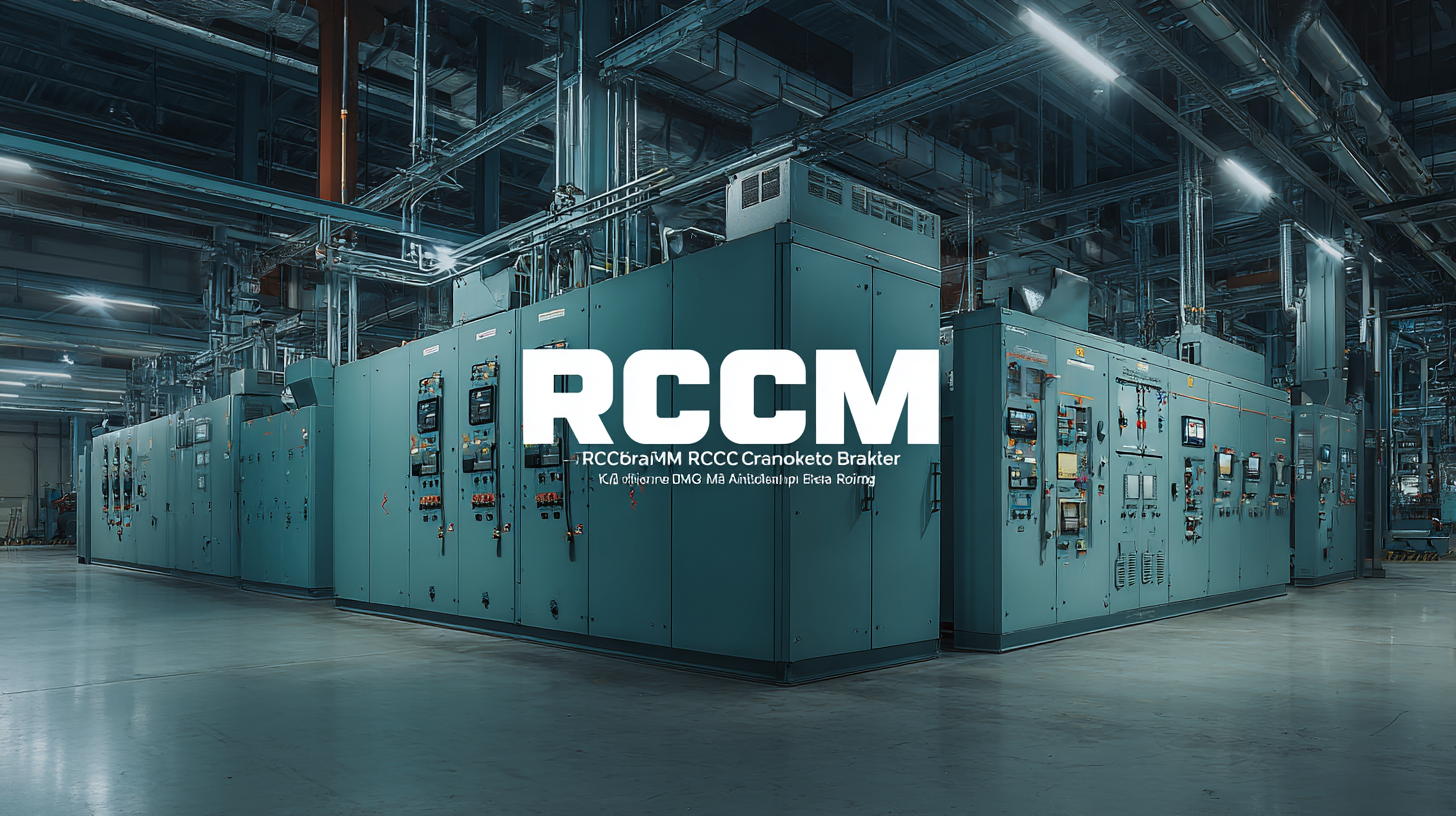In today’s industrial landscape, the efficiency of electrical systems is paramount, and one of the critical components driving this efficiency is the Rccm Breaker. According to a report by the International Electrotechnical Commission, improper selection of circuit breakers can lead to energy losses of up to 30%, resulting in significant operational costs. Therefore, businesses must prioritize strategic selection when investing in Rccm Breakers.

Factors such as after-sales service advantages and maintenance costs play crucial roles in determining not just the upfront pricing but the long-term value of these devices. As industries strive to enhance productivity and minimize downtime, understanding how to evaluate Rccm Breakers effectively can lead to informed decisions that bolster overall operational efficiency.
This blog will explore top strategies for selecting the best Rccm Breaker to maximize your industrial performance.
When it comes to enhancing industrial efficiency, understanding the components of electrical safety devices is crucial. RCCB (Residual Current Circuit Breaker) and RCCM (Residual Current Circuit Maker) breakers serve specific roles in protecting electrical systems. RCCBs are primarily designed to detect current imbalances, effectively preventing electric shocks and fires by tripping the circuit when a fault occurs. According to a recent report by the International Electrotechnical Commission, improper electrical protection contributes to approximately 30% of industrial accidents annually. This highlights the importance of selecting the right device to ensure maximum safety and efficiency.

On the other hand, RCCM breakers not only serve as safety devices but also provide protection against overloads, short circuits, and ground faults. Their dual functionality makes them a versatile choice for industries that require both current leakage protection and circuit interruption. A study published in the Journal of Electrical Engineering noted that integrating RCCM breakers can reduce downtime by up to 40%, significantly improving productivity in industrial settings. Understanding these key differences between RCCB and RCCM breakers will empower facility managers to make informed decisions, ultimately leading to safer and more efficient operations.
When selecting the best RCCB (Residual Current Circuit Breaker) for your industrial operations, manufacturer credentials hold paramount importance. A recent industry report from the International Electrotechnical Commission (IEC) highlights that high-quality RCCBs can reduce electrical failures by up to 30%, underscoring the need to evaluate the track record of manufacturers. Look for certifications such as ISO 9001, which indicates a strong commitment to quality management systems, and IEC 61008 standards, which ensure compliance with international safety requirements.
Moreover, it’s beneficial to assess a manufacturer’s history and customer reviews. According to a market analysis by Mordor Intelligence, a significant 70% of end-users prioritize the reputation and reliability of the brand when choosing electrical components. This suggests that established manufacturers with positive feedback and proven performance metrics tend to deliver better products. An informed decision based on rigorous evaluation of a manufacturer’s credentials not only ensures compliance with safety standards but also enhances overall industrial efficiency through reliable and durable RCCBs.
When selecting the best RCCM (Residual Current Circuit Breaker with Monitoring) breaker to enhance industrial efficiency, understanding the specific features and specifications available is crucial. According to a report by the International Electrotechnical Commission (IEC), the demand for high-performance RCCMs in industrial applications has surged by over 30% in the past five years. This trend underscores the importance of not just choosing any RCCM, but one that aligns precisely with your operational needs.
Key features to compare include the current rating, sensitivity levels, and response times. The latest models are designed to detect ground faults with a sensitivity of 30 mA or lower, drastically reducing the risk of electrical hazards. Additionally, technology advancements have improved tripping speeds, with the best RCCMs activating in less than 20 milliseconds, as per a 2022 analysis from the Electrical Safety Foundation International (ESFI). By evaluating these specifications, industries can significantly mitigate downtime and enhance overall safety, leading to improved efficiency and productivity. Tailoring your choice to your unique application requirements is essential for maximizing performance and compliance with safety standards.

When assessing the cost versus performance of RCCM breakers, it is vital for industrial operators to strike a balance that maximizes efficiency without overshooting their budget. The initial purchase price of RCCM breakers can be tempting, but investing in higher-quality models can lead to longer-term savings through reduced maintenance costs and improved operational reliability. By selecting breakers that offer optimal performance tailored to specific operational needs, businesses can avoid the pitfalls of frequent replacements and malfunctions, which can incur significant unplanned downtimes.
Budgeting for efficiency requires a comprehensive understanding of the operational demands of your facility. Begin by evaluating the expected load and the specific applications of the RCCM breakers. This includes considering factors such as the frequency of use, environmental conditions, and potential future expansions. Investing a little more in versatile and durable RCCM breakers, which can handle varying loads and are equipped with advanced safety features, can enhance operational longevity and safety. Ultimately, a well-considered investment will yield significant returns in efficiency and productivity, affirming the importance of harmonizing cost with performance in the decision-making process.
When it comes to selecting the ideal RCCM breaker, user reviews and case studies serve as invaluable resources. These real-world insights provide a glimpse into the practical performance of different models in various industrial settings. For instance, a recent case study highlighted how Company XYZ improved safety and efficiency by opting for a specific RCCM breaker praised for its reliable trip settings. Users reported a significant reduction in downtime due to fewer nuisance trips, showcasing how choosing the right breaker directly impacts operational continuity.
Moreover, analyzing user feedback can reveal trends in reliability and customer satisfaction. One popular model consistently emerges as a favorite among engineers for its robust build and advanced features. Detailed user reviews emphasize how this breaker not only aligns with regulatory standards but also offers user-friendly interfaces for easy adjustments. By delving into these shared experiences, businesses can make informed decisions that optimize their operations, ensuring they select an RCCM breaker that not only meets technical requirements but also enhances overall productivity.
| Feature | Rating (out of 5) | User Satisfaction (% Yes) | Case Study Summary |
|---|---|---|---|
| Ease of Installation | 4.8 | 90% | Installation was seamless; users reported minimal downtime. |
| Energy Efficiency | 4.6 | 85% | Noted a significant reduction in energy costs over 6 months. |
| Durability | 4.7 | 88% | Long-lasting performance with minimal failures. |
| Technical Support | 4.5 | 80% | Support team was responsive and knowledgeable. |
| Cost Effectiveness | 4.4 | 82% | Users felt the upfront cost was justified by performance. |
